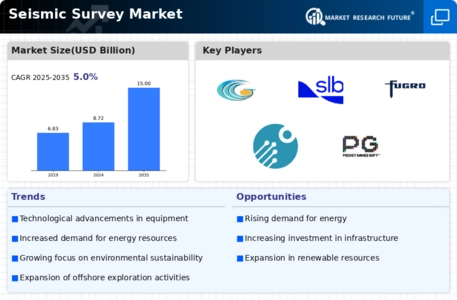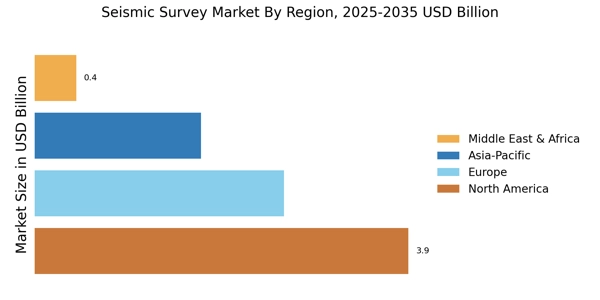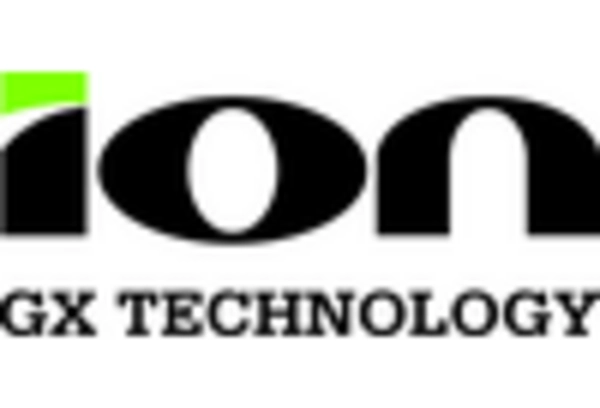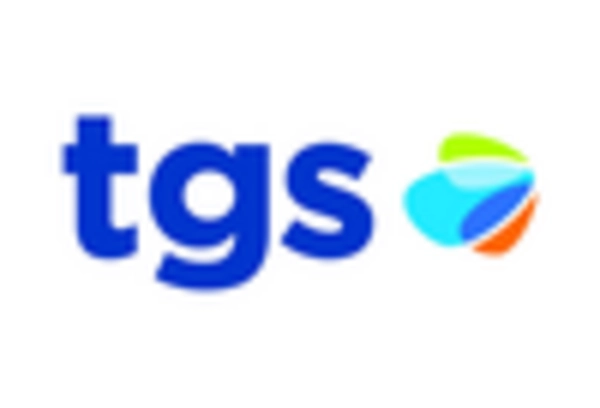Rising Demand for Energy Resources
The increasing global demand for energy resources, particularly oil and natural gas, drives the Seismic Survey Market. As countries strive to secure energy independence and meet consumption needs, exploration activities intensify. According to recent data, the oil and gas sector is projected to invest over 500 billion dollars in exploration and production by 2026. This surge in investment necessitates advanced seismic surveys to identify potential reserves accurately. Consequently, companies are increasingly relying on seismic surveys to optimize resource extraction and minimize environmental impact. The Seismic Survey Market is thus positioned to benefit from this heightened focus on energy resource exploration, as it provides essential data for informed decision-making in the energy sector.
Infrastructure Development Projects
Infrastructure development projects, including transportation and urban expansion, significantly influence the Seismic Survey Market. As nations invest in building roads, bridges, and tunnels, the need for comprehensive geological assessments becomes paramount. Seismic surveys play a crucial role in understanding subsurface conditions, ensuring the safety and stability of these projects. Recent reports indicate that infrastructure spending is expected to reach 3 trillion dollars annually by 2027, further amplifying the demand for seismic surveys. This trend suggests that the Seismic Survey Market will experience growth as construction firms and government agencies seek reliable data to mitigate risks associated with geological uncertainties.
Environmental Regulations and Compliance
The growing emphasis on environmental regulations and compliance is a critical driver for the Seismic Survey Market. Governments worldwide are implementing stricter environmental policies to mitigate the impact of exploration activities on ecosystems. As a result, companies are compelled to conduct thorough seismic surveys to assess potential environmental risks before initiating projects. This trend is evident in the increasing number of environmental impact assessments required for oil and gas exploration. The Seismic Survey Market is likely to see heightened demand as firms prioritize compliance with these regulations, ensuring sustainable practices while pursuing resource development.
Increased Investment in Renewable Energy Sources
The shift towards renewable energy sources is emerging as a significant driver for the Seismic Survey Market. As nations commit to reducing carbon emissions and transitioning to sustainable energy, the exploration of geothermal energy and offshore wind farms is gaining traction. Seismic surveys are essential for identifying suitable sites for these renewable projects, providing critical data on subsurface conditions. Recent estimates suggest that investment in renewable energy could exceed 1 trillion dollars by 2030. This transition indicates a growing role for the Seismic Survey Market, as it adapts to support the evolving energy landscape and facilitate the development of cleaner energy solutions.
Technological Innovations in Surveying Techniques
Technological innovations in surveying techniques are reshaping the Seismic Survey Market. The advent of advanced technologies such as 4D seismic imaging and machine learning algorithms enhances the accuracy and efficiency of seismic surveys. These innovations allow for real-time data analysis and improved interpretation of subsurface structures. As a result, companies can make more informed decisions regarding resource extraction and risk management. The integration of drones and autonomous systems in seismic data collection further streamlines operations, reducing costs and time. This technological evolution indicates a promising future for the Seismic Survey Market, as firms increasingly adopt cutting-edge solutions to stay competitive.


















Leave a Comment